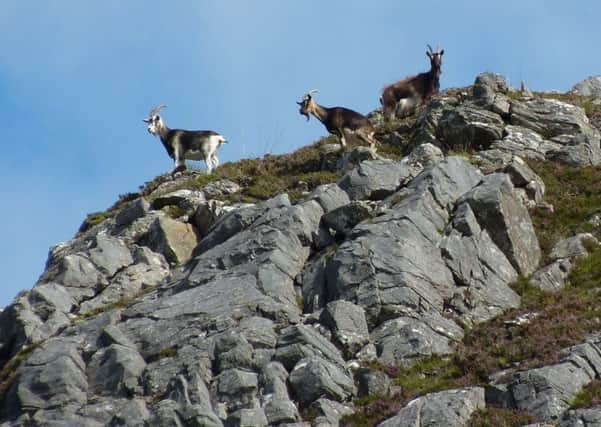Cull looms for '˜destructive' herd of feral goats


But despite their rugged appearance, with shaggy coats and long horns, these sure-footed creatures are not native to Scotland.
Though now officially wild, they are descended from domesticated herds indigenous to south-eastern Europe, the Middle East and central Asia. It’s thought the goats may have been roaming Scottish hillsides since the Stone Age, brought here by Neolithic farmers about 5,000 years ago.
Advertisement
Hide AdAdvertisement
Hide AdThere are herds scattered around the country, with official estimates suggesting there are about 3,000 in total.
Now, though, the effects of climate change may be having an impact on these naturalised populations.
The number of goats living around Kintail and Shiel Bridge, in Wester Ross, has risen in the past two decades, from around 30 in the 1990s to 100 or more today.
Willie Fraser, senior ranger with the National Trust for Scotland, said: “They’re not native to Scotland but they have been here for a long time. They probably originally came from the continent as they have their young in February, which is better suited to a warmer climate. But they continue to do that even this far north.
“In some ways that has always been a natural control on the population, with kids dying off in severe weather. Lots get killed on the road too.
“But in the past 20 years numbers around Shiel Bridge have risen dramatically. The biggest increase has been in the past decade, with a higher than usual percentage of kids surviving because of milder winters. It can probably be attributed to climate change.”
The rising number of goats – which are classed as an invasive alien species – are having an increasingly severe impact on their surroundings, damaging natural habitats.
Culls have already been carried out on herds around Loch Lomond and in Galloway Forest Park, sparking controversy among visitors and locals alike.
Advertisement
Hide AdAdvertisement
Hide AdHowever, similar measures may have to be rolled out in Kintail.
“I’ve found people either love the goats or hate them,” Fraser said. “Some people are very passionate about them and the thought of any control is not an option.
“Unfortunately, without a top predator we’re having to look at a potential cull. It’s an emotive subject but these goats can cause a lot of trouble.
“They’re highly destructive herbivores. And they can climb the side of a house. You need a pretty secure garden to keep them out if they want to come in.
“Plus they are a danger to drivers, wandering across the main road. We have to manage them responsibly, which will benefit the welfare of the whole herd. We’re not going to eradicate them.
“But if their numbers continue to rise the issue will have to be addressed in the same way as management of deer numbers.”
Stan Whitaker, non-native species adviser for government nature agency Scottish Natural Heritage, said: “The International Union for Nature Conservation lists feral goats as one of the 100 worst invasive non-native species globally.
“In Scotland there is evidence feral goats are contributing to grazing pressures on a handful of protected nature conservation sites. They can also cause damage to agriculture, forestry and gardens.
Advertisement
Hide AdAdvertisement
Hide Ad“To prevent such damage, wildlife managers need to actively manage herds of feral goats to control their numbers.
“Some feral goat herds have been established for hundreds of years and there are documented records of feral goats dating back to the 13th century.
“Feral goat herds are regarded affectionately by the public and often have strong local cultural links.”
Legend suggests the animals are protected by what could be Scotland’s earliest wildlife laws. It’s said that Robert the Bruce passed an act to safeguard the goats after a herd saved his life by distracting soldiers searching for him as he hid in a cave by Loch Lomond.